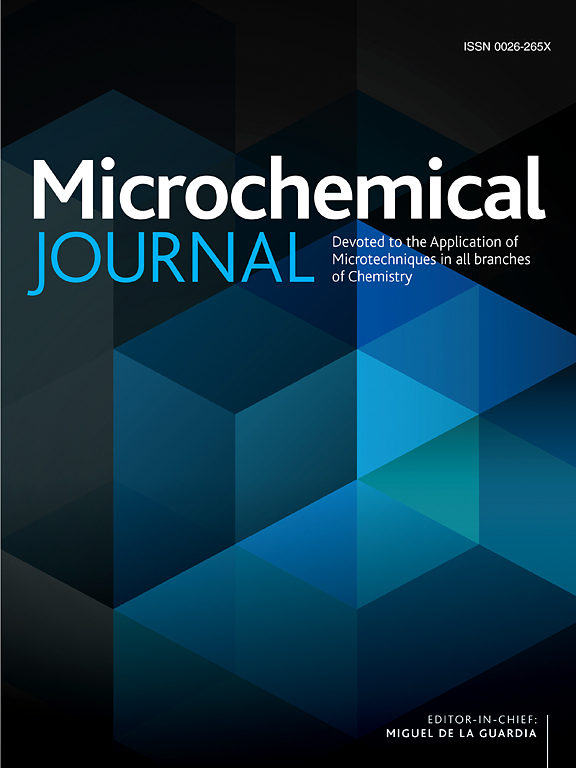作为新兴污染物的纳米塑料:系统回顾分析过程、从水环境中去除污染物的策略、挑战和前景
IF 4.9
2区 化学
Q1 CHEMISTRY, ANALYTICAL
引用次数: 0
摘要
尺寸小于 1 微米的纳米塑料(NPs)作为一种新出现的环境污染物受到了全世界的关注。由于纳米塑料更容易被生物体吸收,因此与微塑料相比,它们对生态和健康的风险更高。天然水是环境中纳米塑料的重要来源,对人类和生态系统的健康都很重要。水体中纳米塑料的分析仍然缺乏可靠和统一的方法。大多数研究都成功地从环境样本中识别并去除了标准参考纳米塑料,但却无法从真实的现场样本中量化纳米塑料。在此,我们回顾了测量和去除海水、河流、饮用水、废水、雪等环境水体中纳米塑料的研究。热解气相色谱-质谱法(py-GC-MS)和表面增强拉曼光谱法是分析实际样品中纳米塑料的两种常用方法。质谱法耗时较长,而且由于颗粒大小的限制,无法分析整个纳米范围。这种测量纳米塑料质量浓度的方法可能会出错,并且需要较大的样品量。对各种去除纳米塑料的策略进行了综述,包括离心、混凝、过滤、絮凝和吸附。纳米塑料的去除效果受来源、尺寸、类型和净化过程等参数的影响。结合过滤和混凝工艺,纳米塑料的去除率可达 99%。这项研究为今后分析和去除水和废水中的纳米塑料提供了基本信息。本文章由计算机程序翻译,如有差异,请以英文原文为准。

Nanoplastics as emerging contaminants: A systematic review of analytical processes, removal strategies from water environments, challenges and perspective
Nanoplastics (NPs) with a size of less than 1 µm have received worldwide attention as an emerging environmental pollutant. Because they are easier for organisms to absorb, they pose higher ecological and health risks than microplastics. Natural water is a significant source of nanoplastics in the environment, and it is important for both human and ecosystem health. The analysis of nanoplastics in waters is still lacking reliable and harmonized methods. Most of the studies successfully identified and removed standard reference nanoplastics from environmental samples, but they were unable to quantify nanoplastics from real field samples. Here, we reviewed studies that measured and removed nanoplastics in environmental waters, such as seawater, rivers, drinking water, wastewater, snow, and so on. Pyrolysis gas chromatography–mass spectrometry (py-GC–MS) and surface-enhanced Raman spectroscopy were two common methods for analyzing nanoplastics in real samples. Mass spectrometry methods are time-consuming and cannot analyze the full nanorange due to particle size restrictions. This approach for measuring nanoplastic mass concentration may involve mistakes and require larger sample quantities. Various strategies for removing nanoplastics, including centrifugation, coagulation, filtration, flocculation, and adsorption, were reviewed. The effectiveness of nanoplastic removal is influenced by parameters such as source, size, type, and purification process. The removal efficiency for nanoplastics is 99 % when combined with filtration and coagulation processes. This study provides basic information for future research on the analysis and removal of nanoplastics from water and wastewater.
求助全文
通过发布文献求助,成功后即可免费获取论文全文。
去求助
来源期刊

Microchemical Journal
化学-分析化学
CiteScore
8.70
自引率
8.30%
发文量
1131
审稿时长
1.9 months
期刊介绍:
The Microchemical Journal is a peer reviewed journal devoted to all aspects and phases of analytical chemistry and chemical analysis. The Microchemical Journal publishes articles which are at the forefront of modern analytical chemistry and cover innovations in the techniques to the finest possible limits. This includes fundamental aspects, instrumentation, new developments, innovative and novel methods and applications including environmental and clinical field.
Traditional classical analytical methods such as spectrophotometry and titrimetry as well as established instrumentation methods such as flame and graphite furnace atomic absorption spectrometry, gas chromatography, and modified glassy or carbon electrode electrochemical methods will be considered, provided they show significant improvements and novelty compared to the established methods.
 求助内容:
求助内容: 应助结果提醒方式:
应助结果提醒方式:


